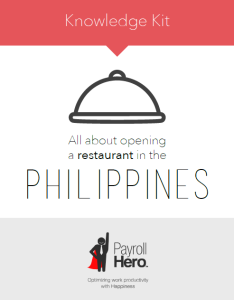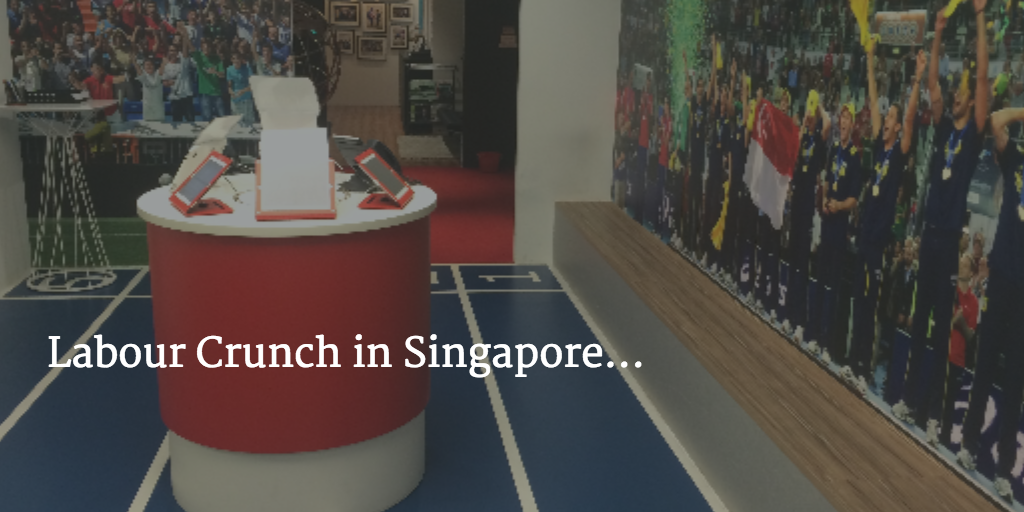
Location: Manila, Philippines
Starting Salary: PHP30,000 or more
Commissions: Uncapped
PayrollHero is a software platform designed for HR and Payroll teams. Our software helps business optimize their workflows. Our products cover timekeeping, attendance, scheduling, leave management, HRIS and payroll. Our founders created PayrollHero to solve the challenges they were facing running a BPO in the Philippines so our products are uniquely positioned to help customers located there.
Since then we have expanded our product offering to service the globe and extending our payroll functionality to help Singapore based customers. Our selfie clock in features are loved by employees worldwide. For more information check out https://payrollhero.com
The Role
Our sales associates are advocates of our product and brand. They have a great appreciation of the benefits are products can provide and work to help organizations take advantage of them.
They want to make sure that our prospective clients will truly benefit from our products so they spend the time to get to know our clients businesses and needs and only make recommendations that will truly benefit our customers.
They will spend their time reaching out to interested parties, meeting with them to understand their business and selling our products and services to people who need them.
This is position is designed for people who want to work remotely. As a result you will need to be able to manage your own time and prioritize well.
What You’ll Do
- Generate, identify and execute new strategic leads (large BPOs, Restaurant and Retail companies)
- Collaborate with the Onboarding Team and customers to negotiate pricing and contracts.
- Identify and rectify new client’s pain points
- Meet with customers to present our products and services
- Forecast sales activity and revenue achievement
- Takes ownership of customer problems and finds ways to solve them independently
What You’ll Achieve
- Get new strategic accounts to the point of first purchase and beyond
- Achieve ambitious incremental revenue targets
- Fantastic relationships with our clients beyond their purchase
- A high frequency of touch points throughout the customer journey for a positive and proactive customer experience
What You Must Have
- Persistence and a drive to overcome barriers and find ways to solve problems creatively to benefit both the customer and the organization
- High degree of empathy and the ability to see other’s perspective
- High levels of integrity and a commitment to do what you say you are going to do
- An understanding of software and the SaaS industry
- Excellent written, verbal and presentation english skills
- Broadband with at least 3 megabit download speed and 1-2 megabit upload speed
- The skills to establish rapport with customers to facilitate the likelihood of retention
- Previous B2B Sales experience an asset
How to Apply
Before you go we’d like to get to know how you handle clients. Below are three scenarios that you might encounter when trying to help customers. Please include an answer to each question with your application.
- Imagine a potential customer emails you with the following question: “I’m considering a switch to PayrollHero, but I was wondering if your software has Applicant Tracking Features?”PayrollHero doesn’t offer this feature yet, but their current provider does. How would you respond?
- A potential client reaches out and says: “I’m very interested in the system but I think the price is too expensive. Can you offer me a discount?” How would you reply?
- You are trying to arrange a face to face demo with a potential client. How do you ensure you get all of the right people in the room?
Please send a cover letter, cv and your answers to the above questions to jobs@payrollhero.com





 In Singapore, Russell operates Kaiseki Yoshiyuki, Horse’s Mouth Bar and Uma Uma! Original Hakata Ramen. They are very popular spots on Orchard Road. Russell is in the process of bringing Uma Uma! Original Hakata Ramen to the Philippines with the first location opening in November 2015 at the SM Mall of Asia.
In Singapore, Russell operates Kaiseki Yoshiyuki, Horse’s Mouth Bar and Uma Uma! Original Hakata Ramen. They are very popular spots on Orchard Road. Russell is in the process of bringing Uma Uma! Original Hakata Ramen to the Philippines with the first location opening in November 2015 at the SM Mall of Asia.
 The F&B sector is facing a labour crunch. Restaurants are turning away diners even though they have empty tables because they are understaffed. This has been a problem in Singapore, but never more serious than now. Singapore’s unemployment rate is at a stunning 1.9%. The turnover rate in the F&B business is the
The F&B sector is facing a labour crunch. Restaurants are turning away diners even though they have empty tables because they are understaffed. This has been a problem in Singapore, but never more serious than now. Singapore’s unemployment rate is at a stunning 1.9%. The turnover rate in the F&B business is the  Employee benefits are a growing concern for human resource (HR) administrators. South East Asia (SEA) lags behind the global average in terms of providing employee benefits. However, when it comes to maternity leave, the situation has been improving.
Employee benefits are a growing concern for human resource (HR) administrators. South East Asia (SEA) lags behind the global average in terms of providing employee benefits. However, when it comes to maternity leave, the situation has been improving.